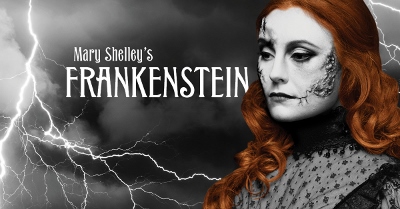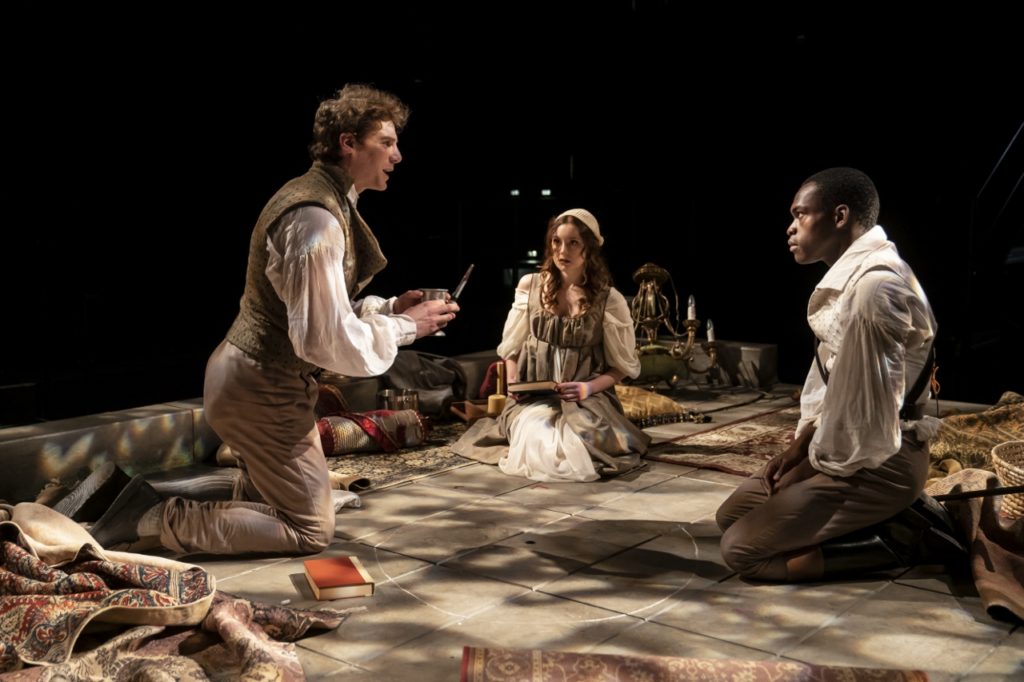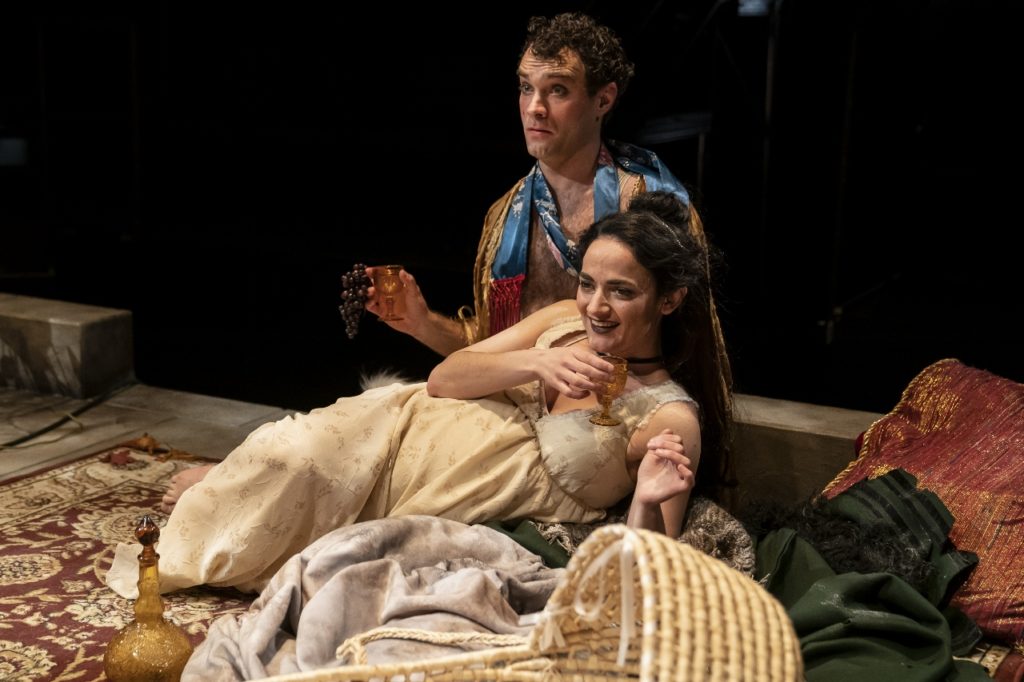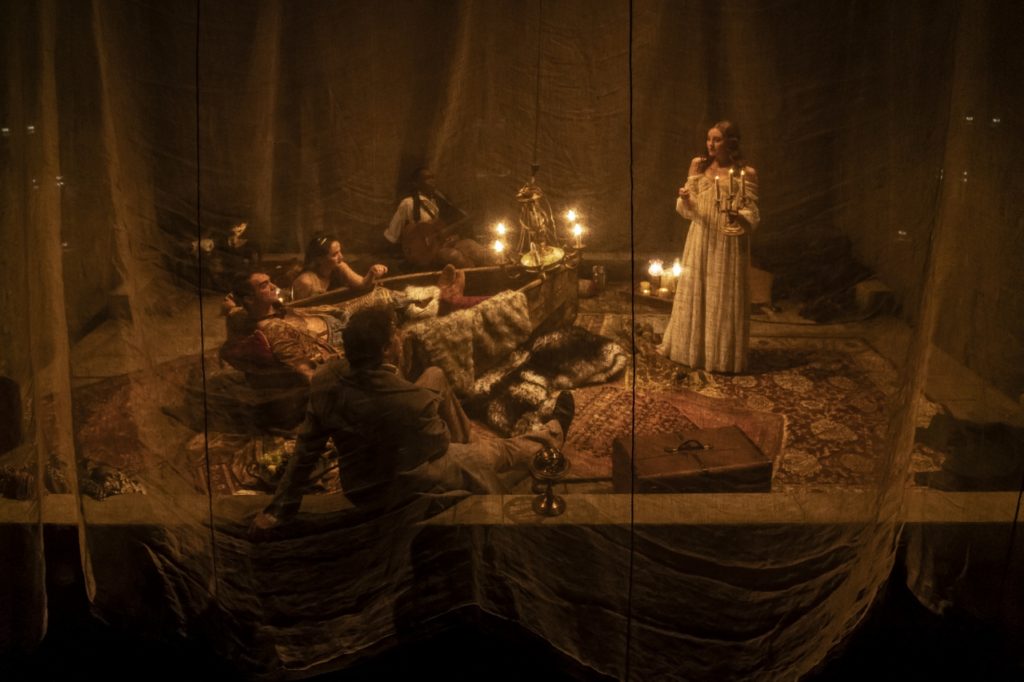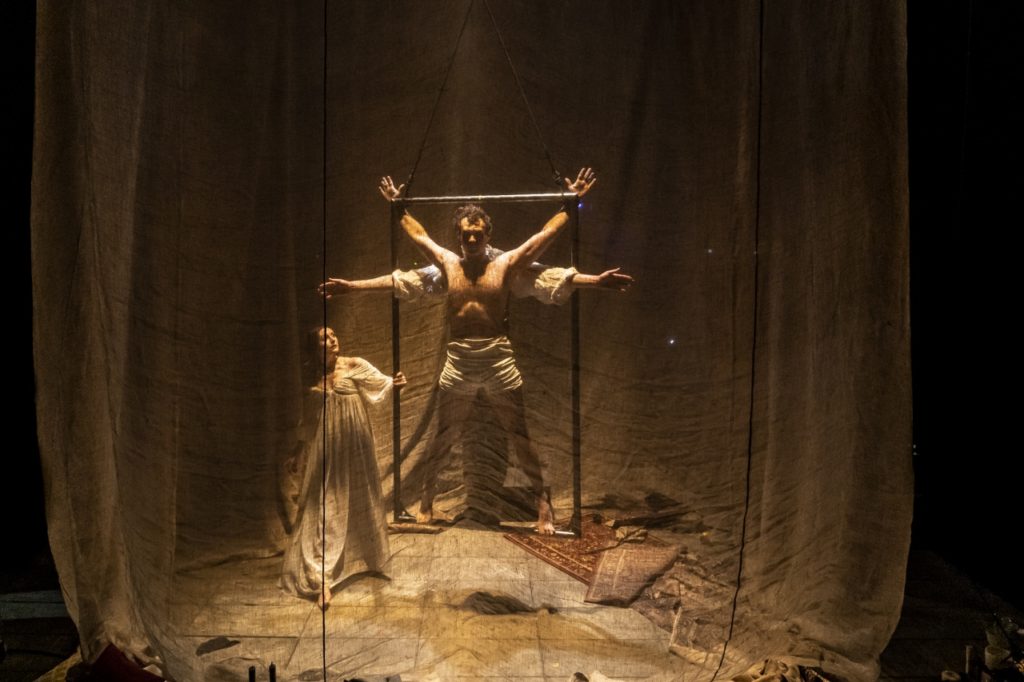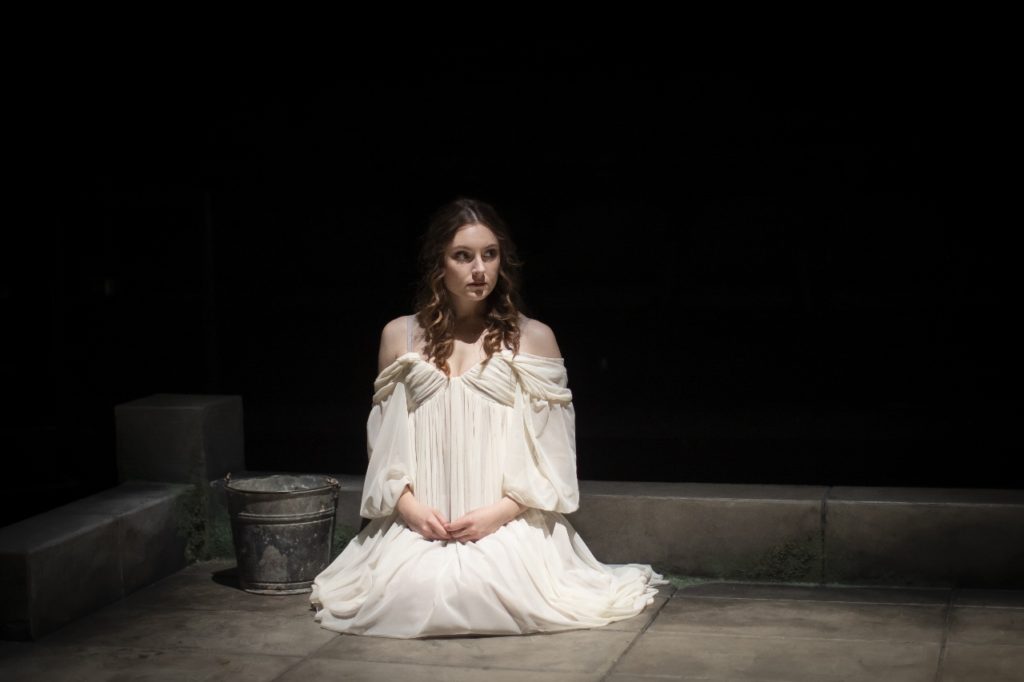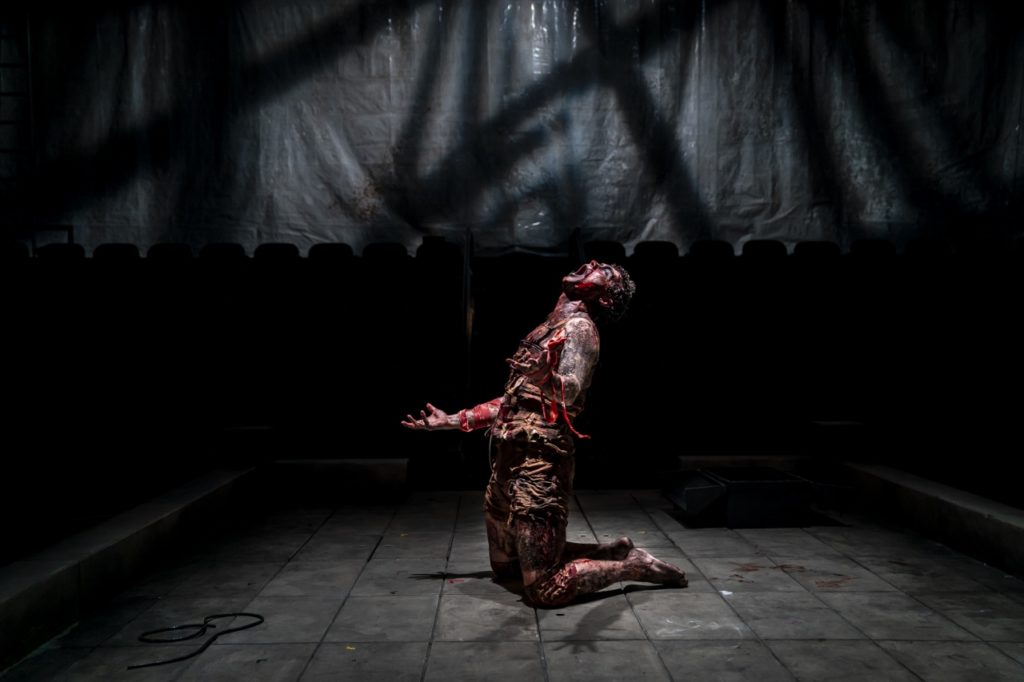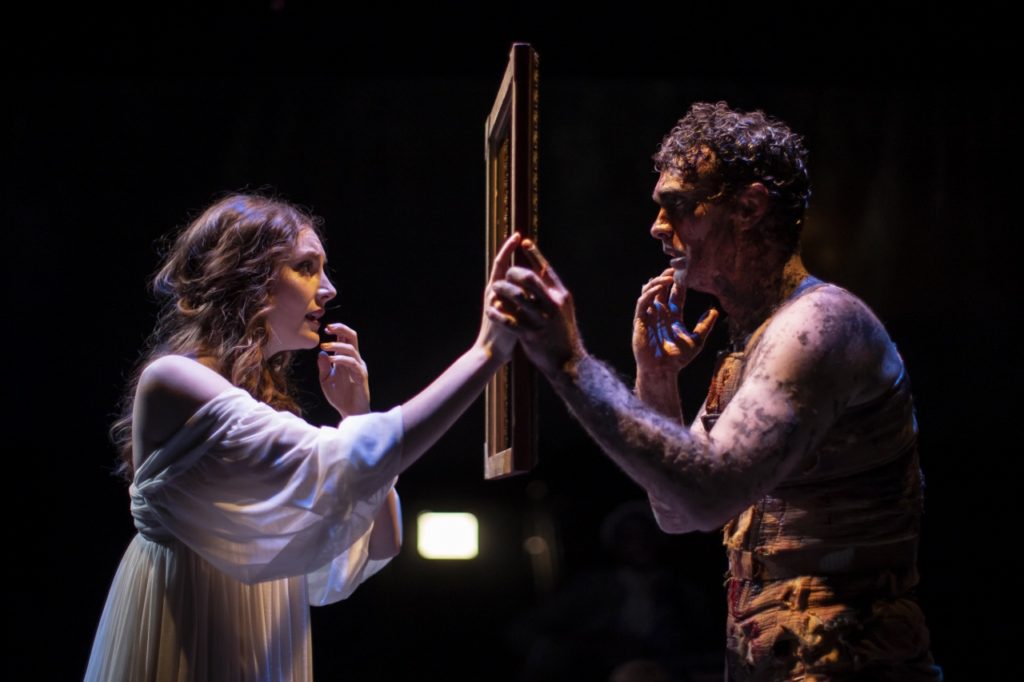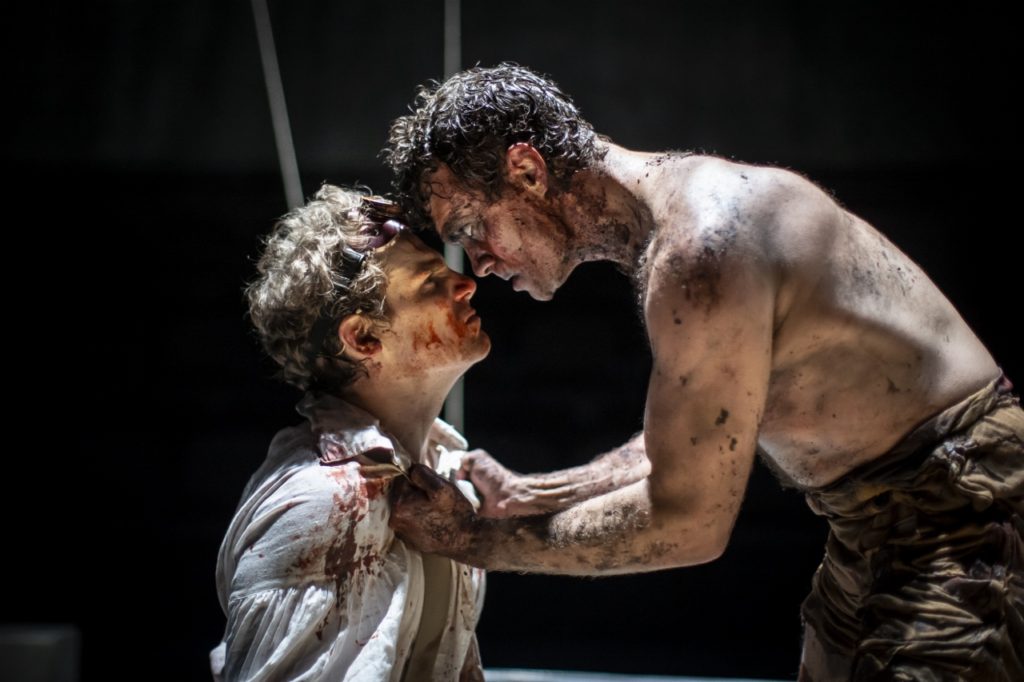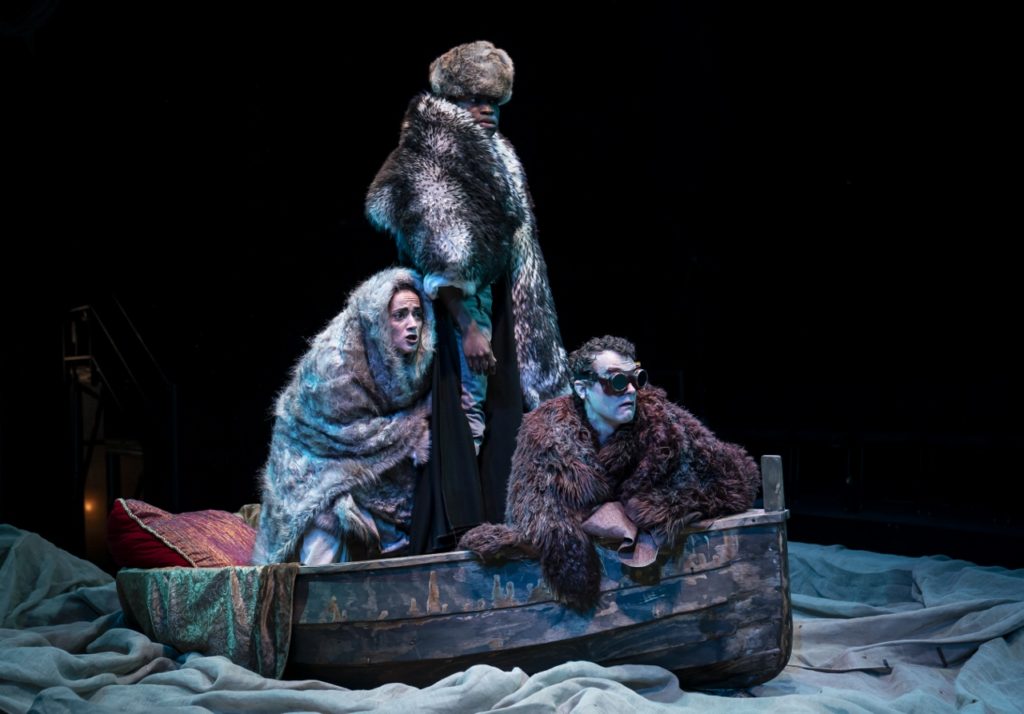THE MONSTER WITHIN
It was a dark and stormy night. Escaping a tempest by seeking shelter in the Villa Diodati on a summer night in 1814, good friends Mary Shelley (as she would later be called), her future husband and Romantic poet Percy Bysshe Shelley, the infamous George Gordon Lord Bryon, affable Dr. John Polidori, and soon-to-be-forsaken Claire Clairmont forged the future. Byron, Shelley (still married to Harriet Godwin), and Mary, daughter of proto-feminist pioneer Mary Wollstonecraft, passed the time by conjuring up ghost stories. Mary’s, finally published in 1818, won the contest. It still does.
Its seemingly redundant title underlining its fidelity to its source, Lookingglass Theatre Company’s new work Mary Shelley’s Frankenstein recreates that storytelling session and, in dazzling detail, the Gothic/sci-fi horror story that arose from it. We’re present at the creation of Western literature’s archetypal cautionary tale — what Lookingglass calls an “undying story” — of the hubristic limits of science and the unpleasantness of reanimation.
Director David Catlin’s 145-minute adaptation recreates that seminal soiree, along with the writers’ sometimes snarky commentary as it spins its spell: In rapid-fire revelations, we meet P.B. Shelley (Walter Briggs), Mary Shelley (Cordelia Dewdney), Lord Byron (Keith D. Gallagher), Dr. Polidori (Debo Balogun) and Claire Clairmont (Cruz Gonzalez-Cadel). Bursting with unstoppable exposition, they leap into the roles of, among other parts, Dr. Victor Frankenstein, the Swiss “modern Prometheus”; his cousin and bride, Elizabeth; the all-avenging Creature; Victor’s fateful friend Henry; and assorted victims of Dr. F’s very botched experiment.
Performed arena-style in set designer Daniel Ostling’s enclosure that gets wrapped up in plastic tarp like serial killer Dexter’s operating theater, the pell-mell action employs Lookingglass’s trademark athleticism and circus trappings (dangling trapeze harnesses and specimen jars, trap doors, rapid exits to upper platforms), Rick Sims’ pyrotechnical sound design and menacing score, and William C. Kirkham’s lurid lighting.
Catlin hews to the original. Playing with possibilities, holy or otherwise, Shelley’s futuristic fantasy depicts the title character’s rage at the loss of his mother. (“Make life!” he’s urged.) Deprivation and desperation induce this medical meddler to gather body parts from grave robbers. Employing “galvanism” and lightning, he induces a semblance of life into a strangely eloquent Creature. First seen splayed on a rack like Leonardo da Vinci’s Vitruvian Man, he’s a makeshift Adam (or later Caliban) trapped in a mockery of Paradise. But the real monster, despite his protestations that “I am not responsible,” is, of course, the necromancer Victor.
What follows is familiar fare, though two centuries old and somewhat distorted by Boris Karloff and Mel Brooks. Rejecting a warning to deal in life, not death, Victor becomes enthralled (in every way) by and to his perverse creation. Alone in his wretched singularity, the man-made monster aches to be more than just an assemblage of organ transplants. It’s not enough that a blind man shows him kindness (because he can’t see his hideousness): The Creature needs a mate. That consolation denied, the humanoid embarks on a killing spree that — ranging from the Alps to the Orkney islands and finally to the Arctic — will take many lives.
More than just scary stuff, Mary Shelley’s Frankenstein restores the work to its author, preserving, among other touches, Victor’s rescue after capsizing and liberated Mary’s sardonic view of marriage as shown in Victor’s very conditional nuptials with Elizabeth.
Finally, the harrowing saga comes full circle: We return to the Villa Diodati as Mary provides epilogues for these five friends. Excruciatingly enough, her story’s cycle of creation and rejection, love and loss played out in real life. Reaching beyond the usual shock effects, Catlin’s five performers — each a forcefield — flesh out every flaw and fate.
Most people mistakenly assume that the Creature’s name is Frankenstein, not his perpetrator. Maybe that’s not so wrong: After seeing this lacerating opus at the Water Tower’s pumping station, their confusion feels right: The Creature is Frankenstein — and us.
photos by Liz Lauren
Mary Shelley’s Frankenstein
Lookingglass Theatre Company
Water Tower Water Works, 821 N. Michigan
ends on August 4, 2019 EXTENDED to September 1, 2019
for tickets, call 312.337.0665 or visit Lookingglass
for more shows, visit Theatre in Chicago
